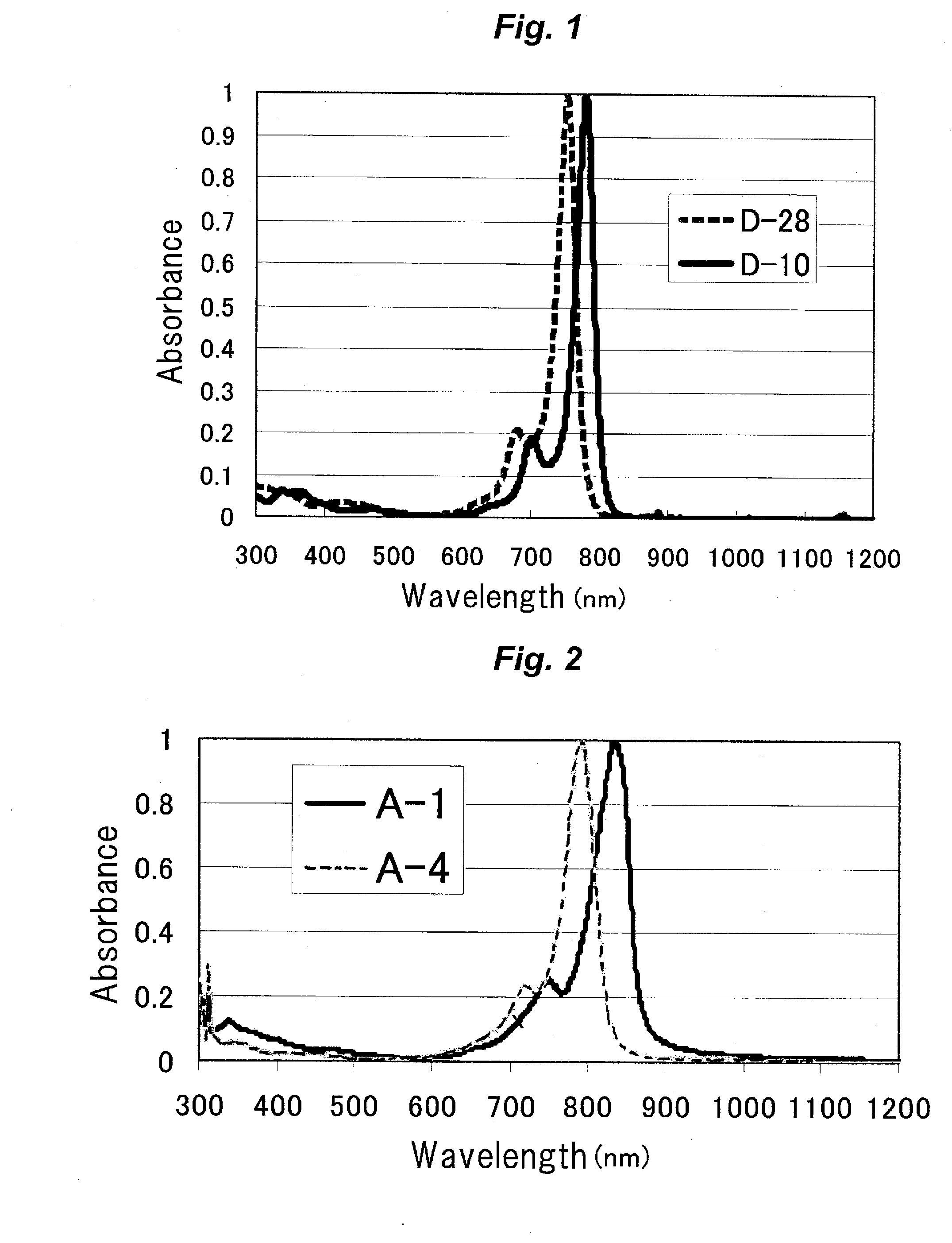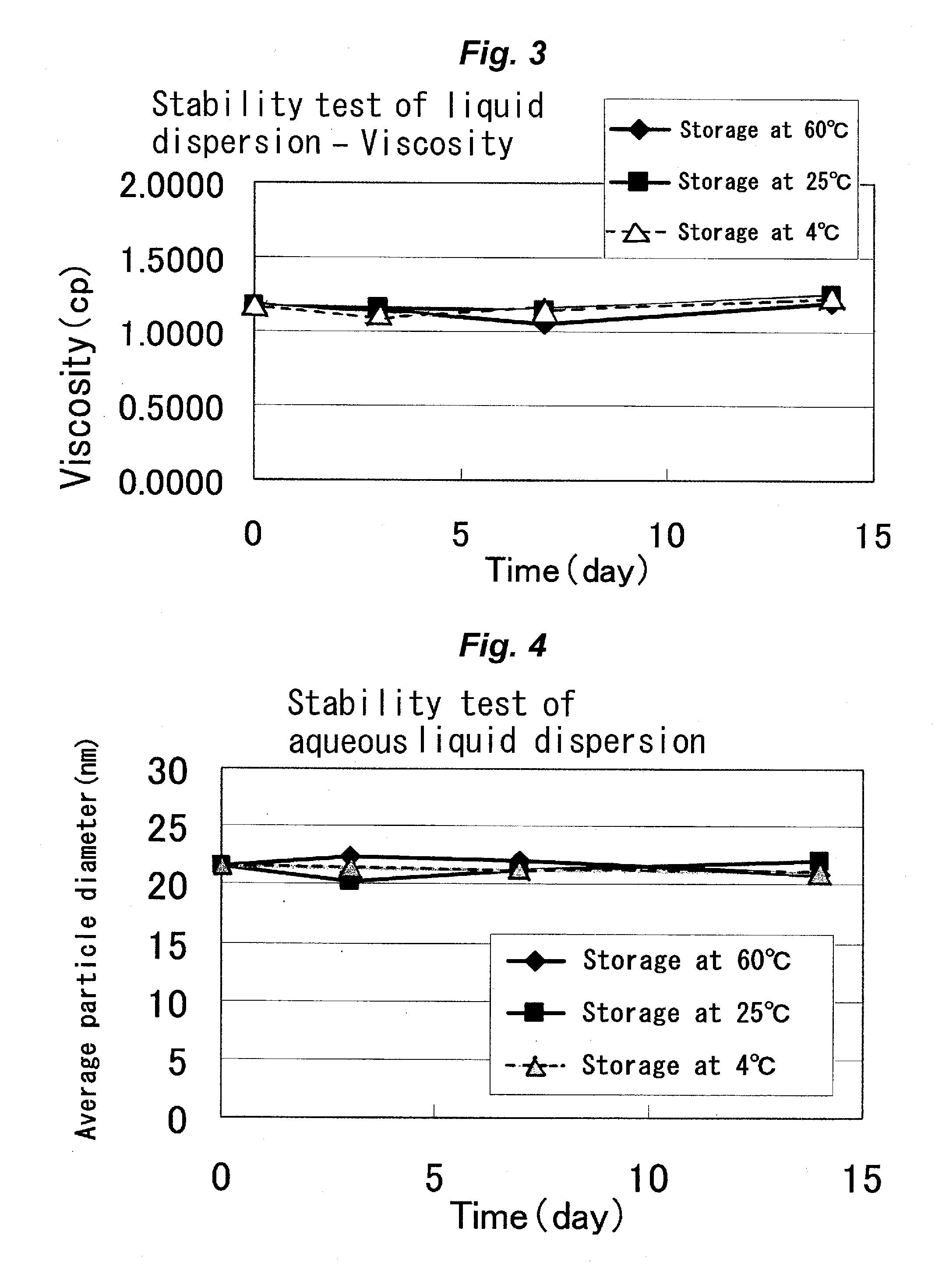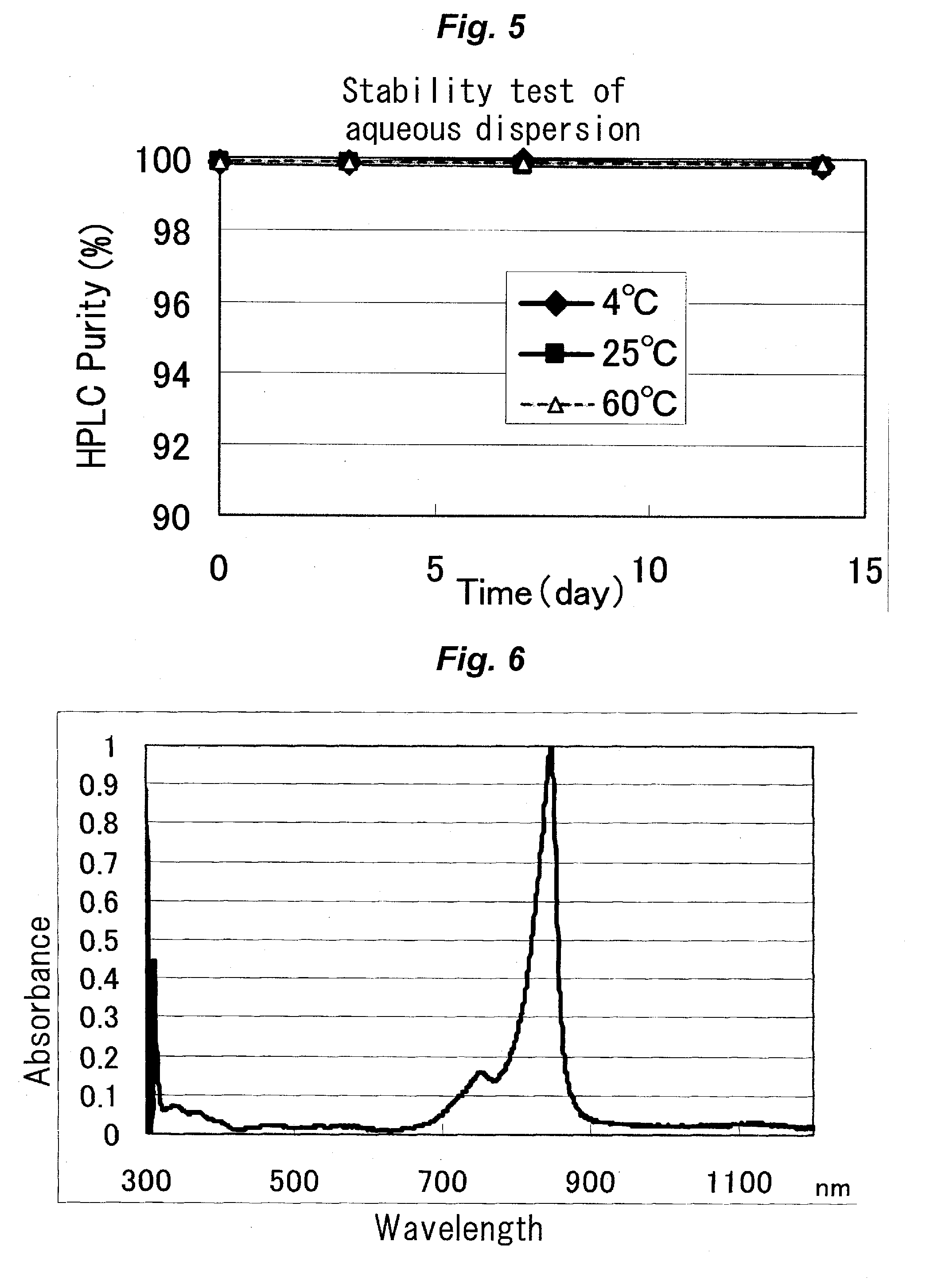Near-infrared absorptive composition, near-infrared absorptive coated material, near-infrared absorptive liquid dispersion, near-infrared absorptive ink, printed material, and near-infrared absorptive image-forming composition
a technology of near-infrared absorption and composition, which is applied in the direction of group 3/13 element organic compounds, inks, printing, etc., can solve the problems of insufficient invisibility of vanadylphthalocyanine dye, loss of invisibility, and restriction of use, and achieves sufficient dispersion stability, high invisibility and light resistance, and high invisibility.
- Summary
- Abstract
- Description
- Claims
- Application Information
AI Technical Summary
Benefits of technology
Problems solved by technology
Method used
Image
Examples
synthetic example 1
Preparation of Exemplified Compound (D-17)
[0257]An exemplified compound (D-17) was prepared in accordance with the following scheme 1.
[0258]In the present specification, “Pr” represents a propyl group.
[0259]First, a diketopyrrolopyrrole compound (DPP) was synthesized in accordance with a method described in U.S. Pat. No. 5,969,154, using 4-(2-ethylhexyloxy)benzonitrile as a starting material.
[0260]In 60 mL of toluene, 3 g (1 equivalent by mol) of the diketopyrrolopyrrole compound, and 1.6 g (2.5 equivalents by mol) of 2-benzothiazoleacetonitrile were stirred, and then thereto was added 6.5 g (8 equivalents by mol) of phosphorus oxychloride. The solution was heated and refluxed for 4 hours. The solution was cooled to room temperature (25° C.), and then thereto were added 50 mL of chloroform and 20 mL of water. Furthermore, the solution was stirred for 30 minutes. Therefrom, the organic layer was taken out by a liquid-separating operation. The organic layer was washed with an aqueous ...
synthetic example 2
Preparation of Exemplified Compound (D-10)
[0262]An exemplified compound (D-10) was prepared in accordance with the scheme 1.
[0263]Titanium chloride (0.9 mL, 3 equivalents by mol) was added to a 1.2 M solution of 2-aminomethyl diphenylborinate (1.4 g, 3 equivalents by mol) in toluene, and then the solution was stirred at a circumscribing temperature of 100° C. for 30 minutes. Next, a 0.2 M solution of exemplified compound (D-17) (2.3 g) in toluene was added thereto, and further the solution was stirred for 2 hours under heating and refluxing conditions. The solution was cooled to room temperature, and methanol was added thereto. As a result, a crystal precipitated. The crystal was collected by filtration, and was recrystallized with chloroform / methanol. This process gave 3.0 g of the exemplified compound (D-10) (yield: 93%).
[0264]The λmax of the exemplified compound (D-10) was 779 nm in chloroform. The molar absorption coefficient of the exemplified compound (D-10) was 2.06×105 dm3 / m...
synthetic example 3
Preparation of Exemplified Compound (D-28)
[0266]An exemplified compound (D-28) was prepared in the same manner as the above, except that the starting materials were changed. 1H-NMR results for identifying the structure thereof are shown below.
Exemplified Compound (D-28)
[0267]1H-NMR (CDCl3): δ 1.9 (s, 6H), 6.65 (d, 2H), 6.7-6.8 (m, 6H), 6.95 (m, 8H), 7.0-7.1 (m, 4H), 7.25-7.35 (m, 12H), 7.5 (m, 2H), 7.85 (d, 2H)
[0268]The λmax of the exemplified compound (D-28) was 752 nm in chloroform. The molar absorption coefficient of the exemplified compound (D-28) was 1.53×105 dm3 / mol·cm in chloroform.
PUM
| Property | Measurement | Unit |
|---|---|---|
| particle diameter | aaaaa | aaaaa |
| absorption wavelength | aaaaa | aaaaa |
| wavelength | aaaaa | aaaaa |
Abstract
Description
Claims
Application Information
 Login to View More
Login to View More - R&D
- Intellectual Property
- Life Sciences
- Materials
- Tech Scout
- Unparalleled Data Quality
- Higher Quality Content
- 60% Fewer Hallucinations
Browse by: Latest US Patents, China's latest patents, Technical Efficacy Thesaurus, Application Domain, Technology Topic, Popular Technical Reports.
© 2025 PatSnap. All rights reserved.Legal|Privacy policy|Modern Slavery Act Transparency Statement|Sitemap|About US| Contact US: help@patsnap.com



